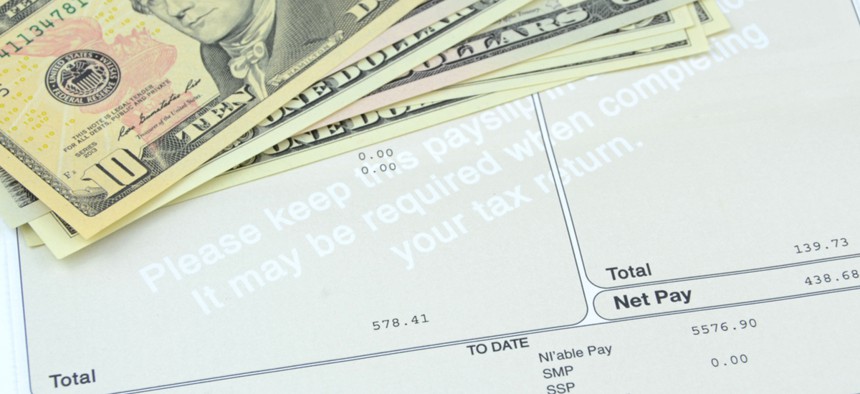The States Where Salaries Stretch Farthest

The same goods vary in price from place to place, affecting consumers' purchasing power. shutterstock
The purchasing power of your salary depends largely on where you live, according to new research from the Tax Foundation.
The dollar amount of your salary may not represent your actual purchasing power, depending on where you reside, according to new research from the Tax Foundation.
The data, released this week in a map, shows the “real value” of $100 in various states and the District of Columbia, based on the assumption that prices for the same goods—and thus, consumers' purchasing power—vary from place to place. The Tax Foundation, a conservative-leaning nonprofit tax think tank based in Washington D.C., designates states as either “low-price” or “high-price” depending on those regional price differences.
The lowest-price state, where money stretches farthest, is Mississippi. There, $100 will purchase $115.74 worth of goods. Other low-price states include Alabama ($115.47), Arkansas ($115.07), West Virginia ($114.16), Kentucky ($113.90) and South Dakota ($113.25).
Hawaii, where $100 will buy $84.46 worth of goods, is the highest-price state, followed by the District of Columbia ($86.28), New York ($86.51), California ($87.41), New Jersey ($88.34) and Maryland ($91.32).
Those gaps in pricing affect residents’ ability to stretch their salaries, the foundation says. For example, “real purchasing power is 34 percent greater in Mississippi than it is in New York. In other words, by this measure, if you have $50,000 in after-tax income in Mississippi, you would need after-tax earnings of $67,000 in New York just to afford the same overall standard of living,” wrote Erica York, an analyst at the Center for Federal Tax Policy at the Tax Foundation.

To some extent, price differentials from state to state correlate with higher incomes, as places with higher costs of living tend to pay higher salaries for the same jobs than their lower-cost counterparts.
“This is what labor economists call a compensating differential,” York wrote. “The higher pay is offered in order to make up for the low purchasing power.”
But it may not result in more purchasing power, as “those dollars go right back out to pay for higher rents and pricier meals,” according to research from Indeed Hiring Lab. (Adjusted for cost of living, Indeed found that salaries go the farthest in the Brownsville-Harlingen, Texas metro area, though Duluth, Minnesota has similar cost of living with more economic opportunity.)
York, though, noted that in North Dakota there are high incomes without the associated high prices.
“Residents of Massachusetts and North Dakota earn approximately the same amount in dollars per capita, but after adjusting for regional price parity, North Dakotan incomes can buy more,” she wrote.
The map is based on data from the U.S. Bureau of Economic Analysis that tracks regional price parities, or RPPs. RPPs “express the average prices paid by consumers for a mix of goods and services,” including food, transportation and rent, York said.
The data does not take into consideration taxes or government services, York said, though the latter could “potentially play a role in this to the extent that government services are attracting more people to live in a certain area.”
“However, there are a great number of reasons why individuals decide to live in one place or another, such as family, job opportunities, weather, taxes, and many more,” she said.
Kate Elizabeth Queram is a Staff Correspondent for Government Executive’s Route Fifty and is based in Washington, D.C.
NEXT STORY: Despite Drop in Black Unemployment, Significant Disparities Remain





